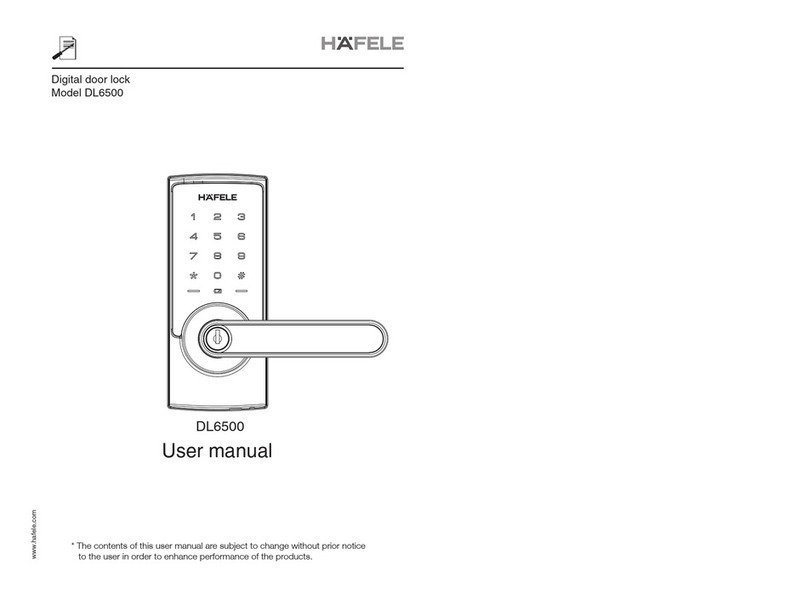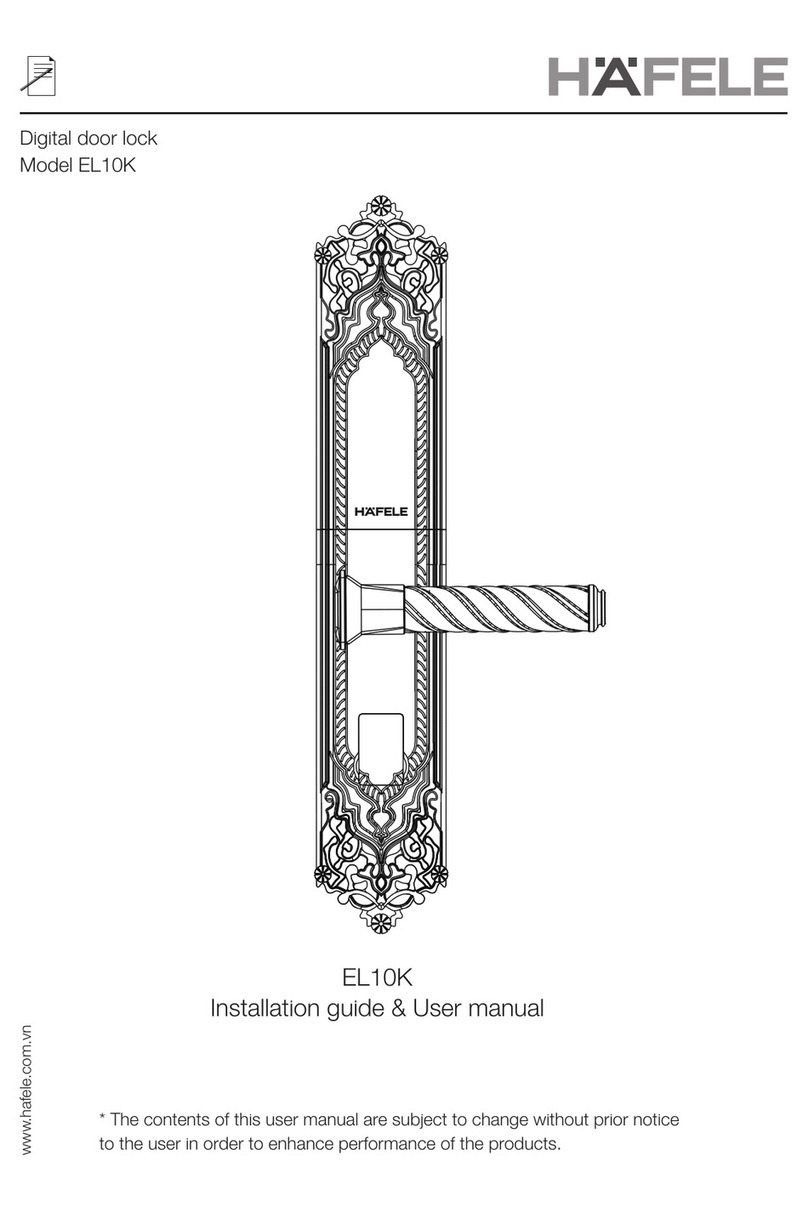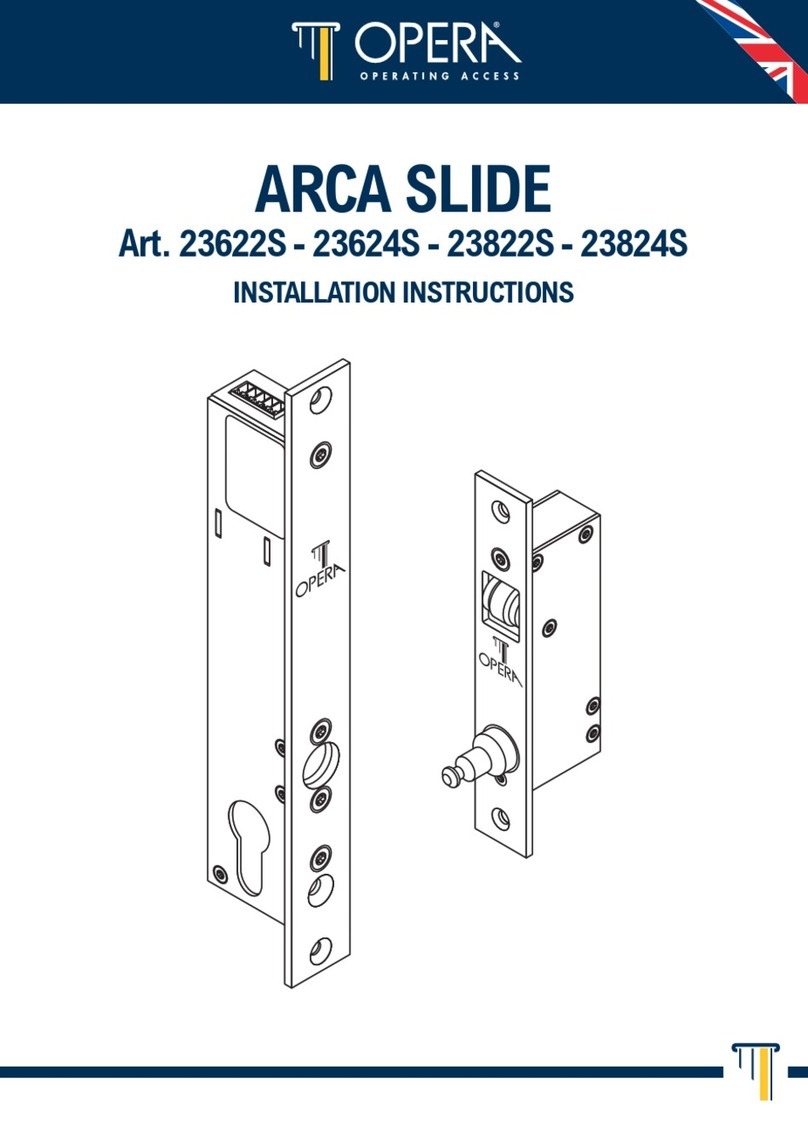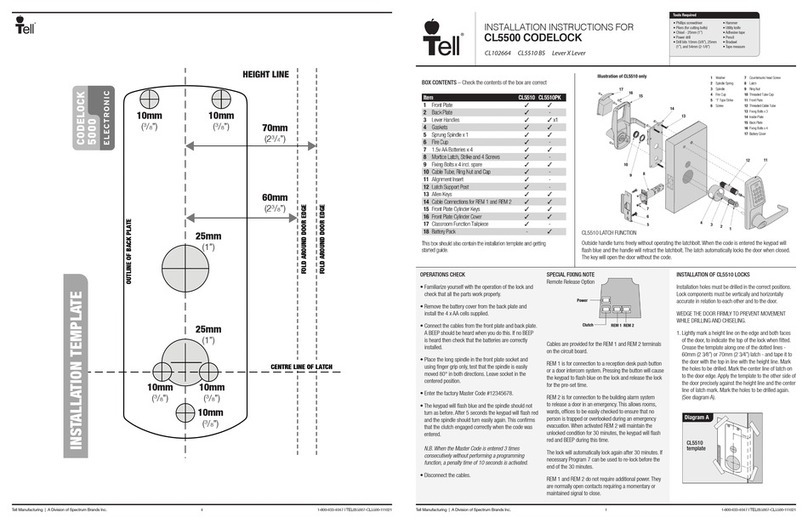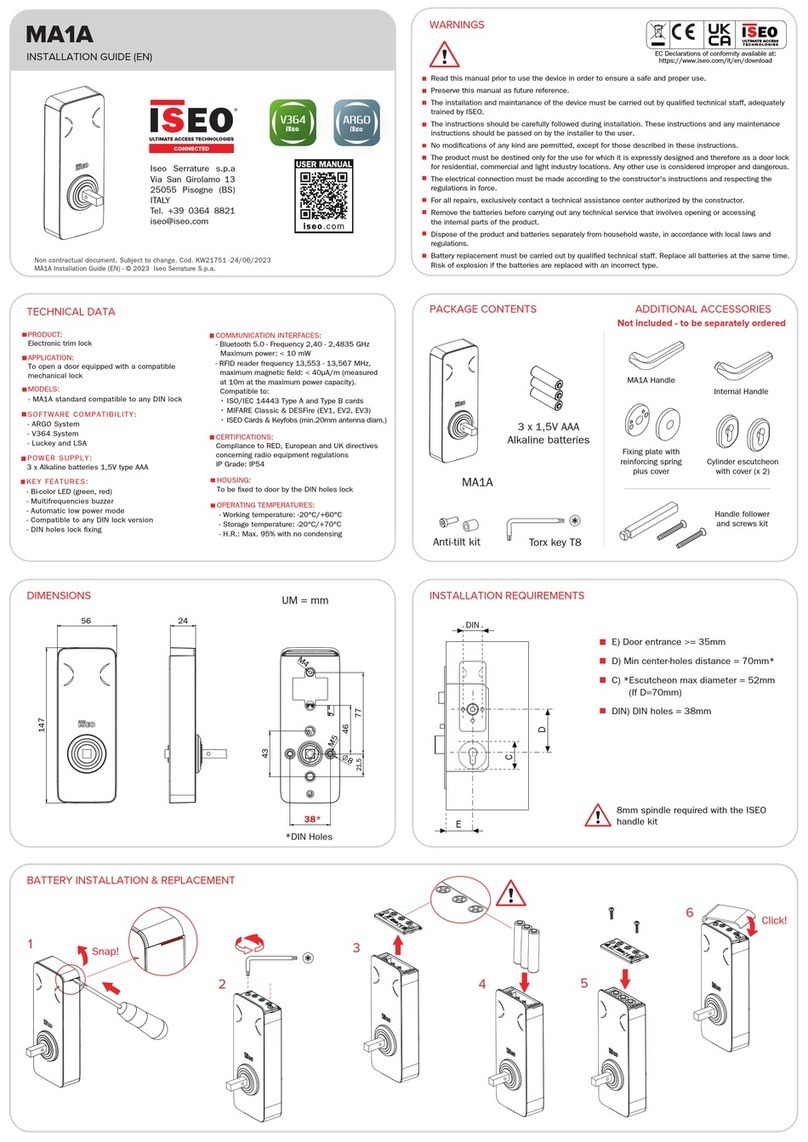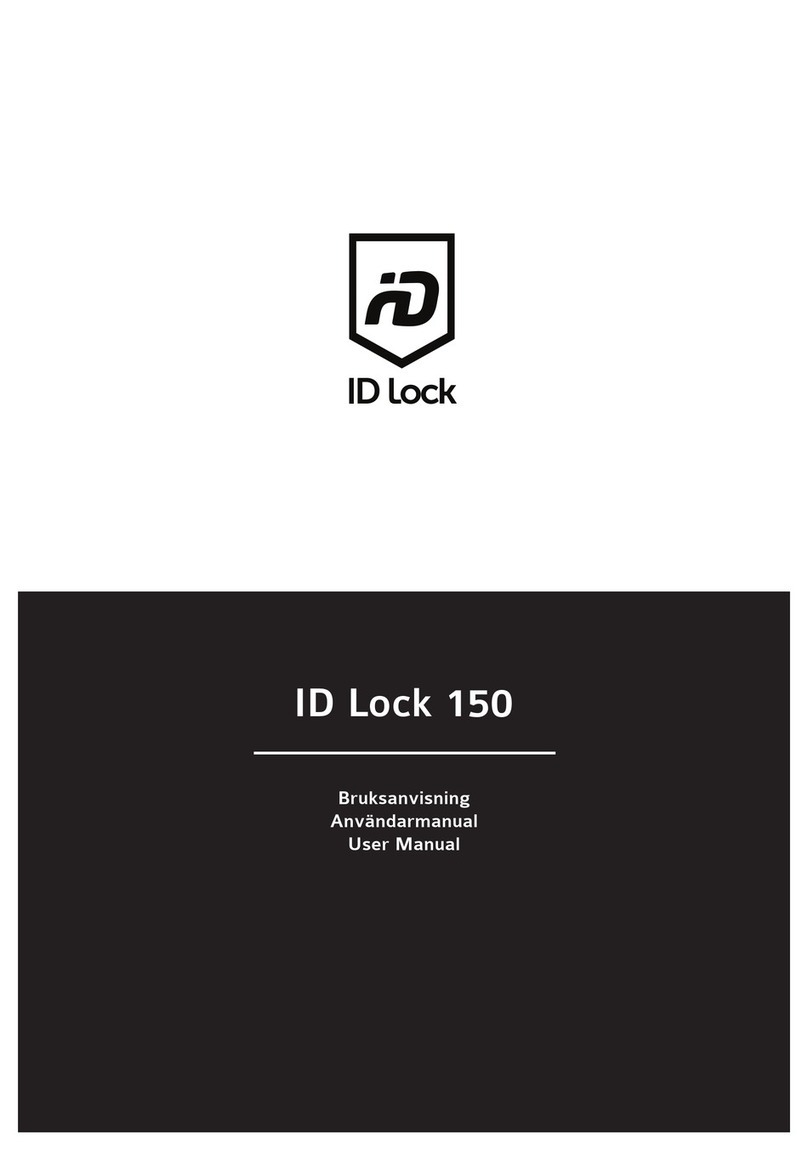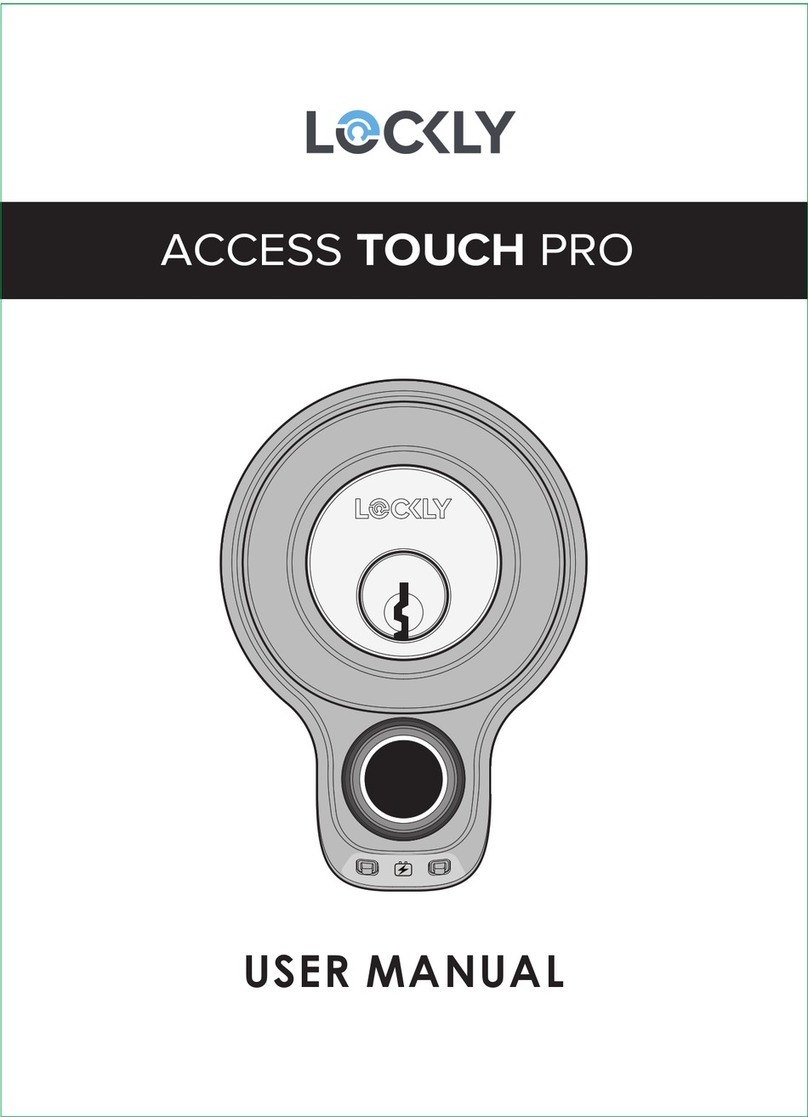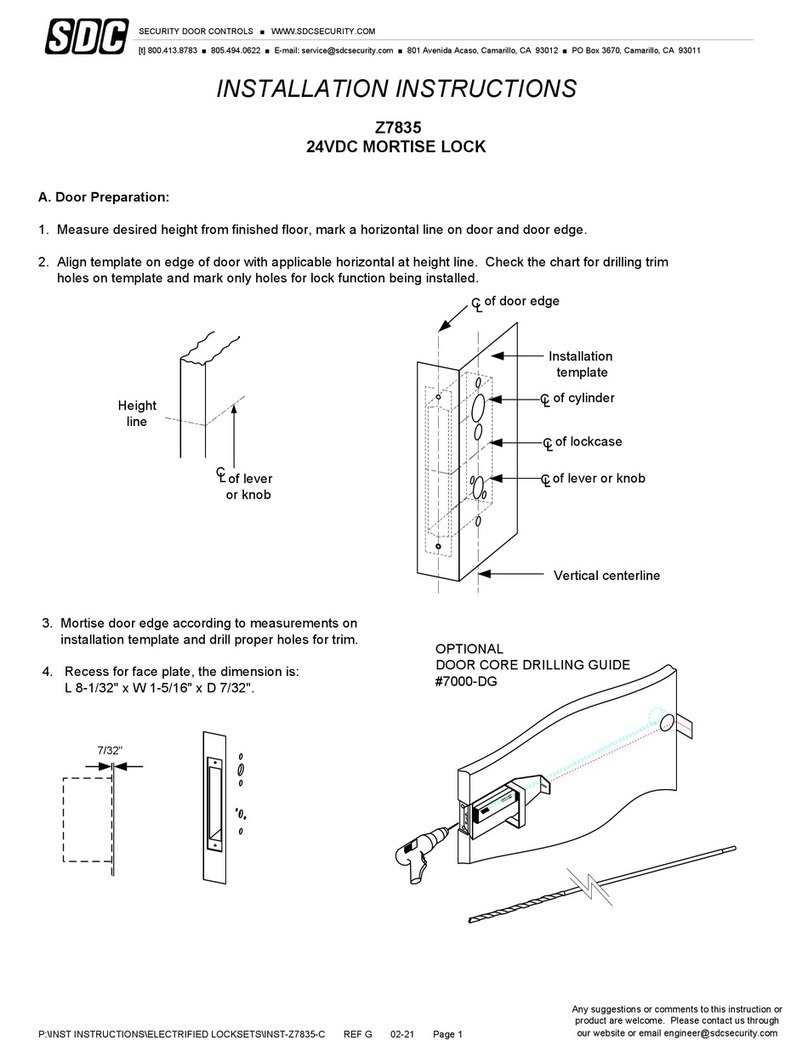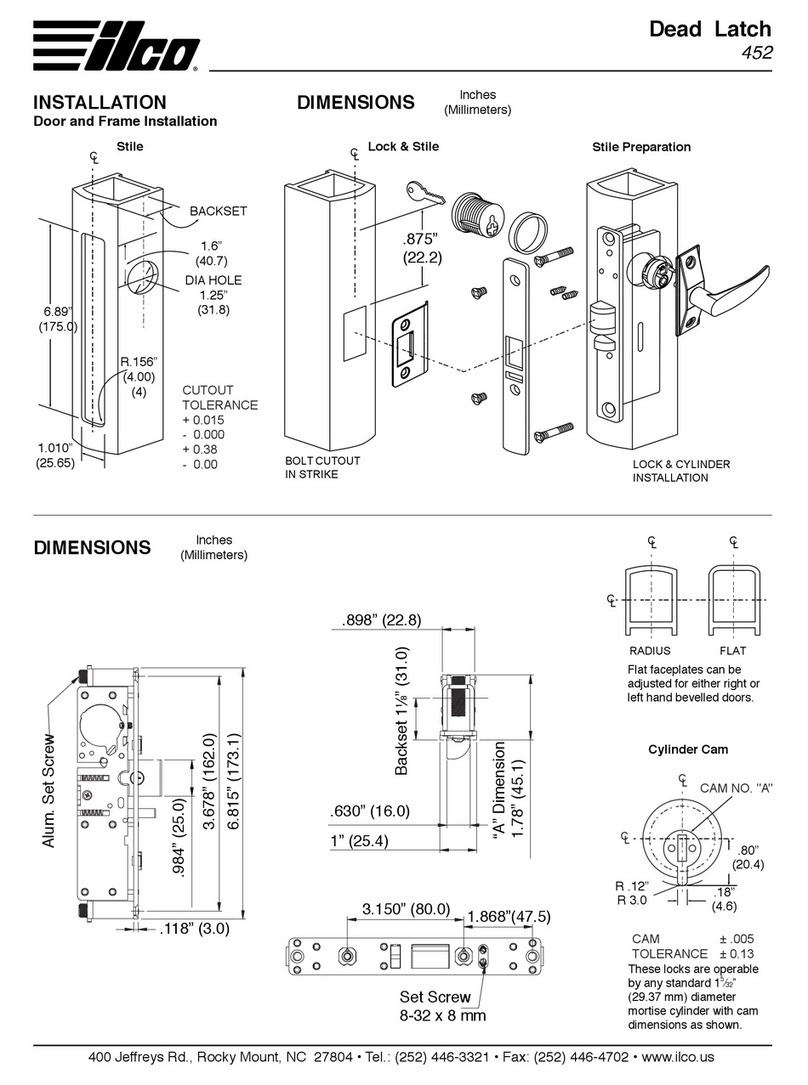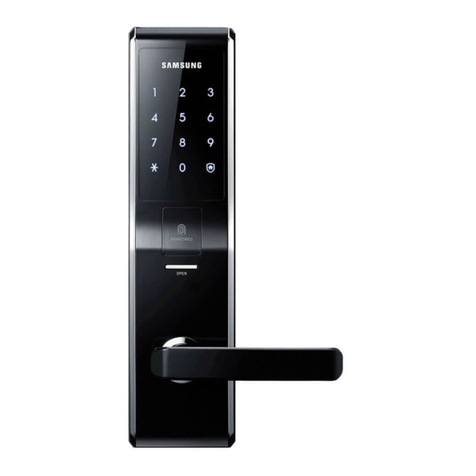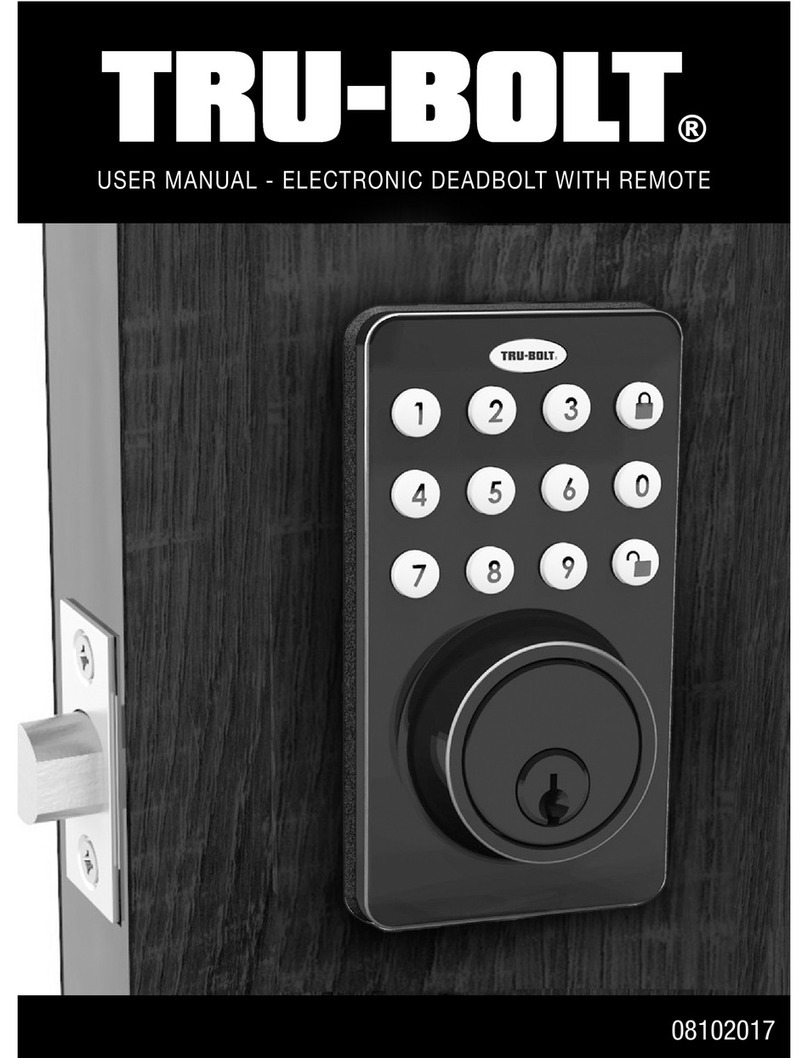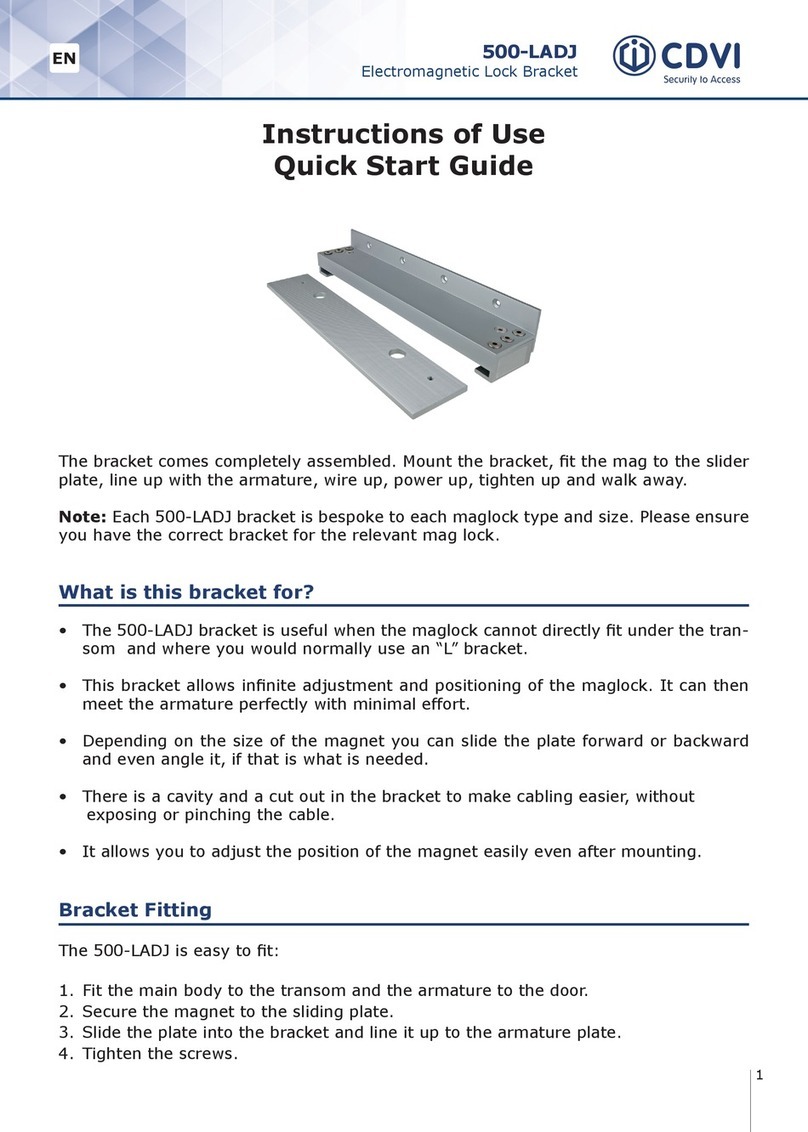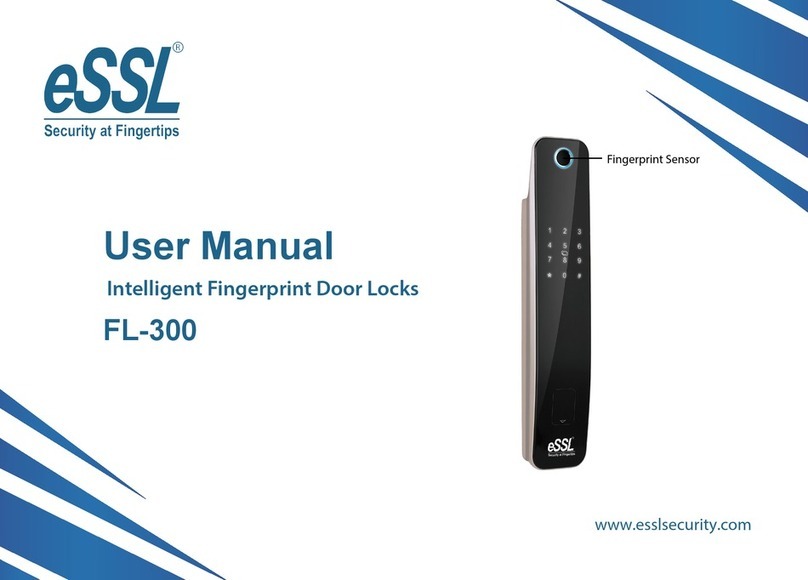
Item No.: 237.56.350
Mounting Instructions
StealthLock Battery Powered RF Cabinet Lock
StealthLo k is an innovative solution for keyless invisible se urity. Using radio frequen y te hnology,
StealthLo k allows you to se ure almost any wood abinet door or drawer with little or no hanges to
the abinet design.
StealthLo k is battery operated and works with a user established 4 to 8 digit ode. Operation is simple:
input your ode and press lo k or unlo k. The Lat h an operate any Re eiver Lat h within a 15 foot
range whi h allows it to be pla ed anywhere, leaving no tra e of visible hardware. In addition, the
Lat h an operate multiple Re eiver Lat hes to se ure an entire room or bank of abinets.
StealthLo k is designed to install and program easily and offers:
• Programmable user and supervisor odes
• Programmable modes of operation
• Programmable reset features
StealthLo k is re ommended for use on abinets made from:
• Wood
• Wood produ ts
• Phenoli resin
• Glass
StealthLo k is NOT intended for:
• Metal furnishings or abinets
• Mobile arts
• Exterior furnishings or abinets
• Appli ations where temperatures fall below 50° F or above 120° F
StealthLo k may be used in households to help prote t hildren from unsafe materials. It is strongly
re ommended that all batteries used by the StealthLo k be repla ed on an annual basis. Please mark
this date on your alendars to insure repla ement. StealthLo k has been developed to ex eed the
ANSI/BIFMA 50 lb. strength requirement. In the event you have allowed the batteries to die, you
will need to for efully enter the abinet. The StealthLo k strike plate is designed to shear away at
60 lbs. of for e. A new strike plate will then be needed to operate the lo k.


